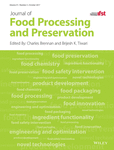Effect of extraction solvents and thermal drying methods on bioactive compounds and antioxidant properties of Catharanthus roseus (L.) G. Don (Patricia White cultivar)
Funding information: University of Newcastle
Abstract
Catharanthus roseus (L.) G. Don (C. roseus) is well known as an important medicinal plant, with compounds such as the vinca alkaloids isolated for their anticancer activity. As such, it is important to determine the effective solvent for bioactive compound extraction from this plant and the suitable drying methods for preparation of starting material. The aims of this study were to determine the effect of extraction solvents and drying methods on bioactive compounds and antioxidant properties of C. roseus. Water was found to be the optimal solvent for phenolic and flavonoid extraction; whereas, methanol was the best solvent for saponin and proanthocyanidin extraction. The data also revealed that vacuum drying at 50°C was suitable for drying the leaf and the flower which contained high levels of phenolics and flavonoids, while infrared drying at 35°C was recommended for drying the stem and the root which had high saponin content.
Practical applications
This study suggested that different parts of C. roseus had different suitable thermal drying methods. For the leaf and the flower, vacuum drying at 50°C was the optimal drying method, whereas infrared drying at 35°C was suitable for drying the stem and the root. These drying conditions can be easily applied for preparation of dried plant parts with high levels of bioactive compounds in the large scale. Importantly, the data indicated that the stem and the root of C. roseus which were considered as waste when the leaf was used for exploiting alkaloids, possessed great content of saponins. Therefore, these parts can be further used for isolation and purification of saponins.




